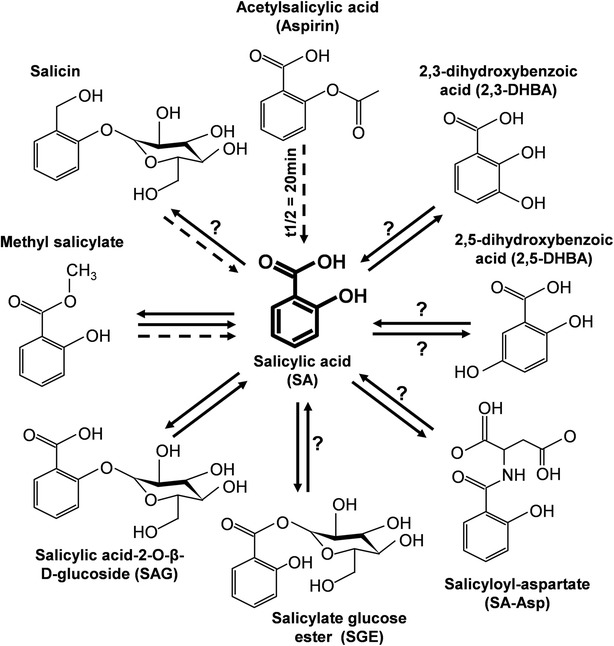Fig. 2.

SA undergoes many modifications in plants. The level of biologically active SA in the cytoplasm is regulated by an array of modifying enzymes that convert it to biologically inactive derivatives (reviewed in [40]). Shown here are the structures of SA and its derivatives; their interconversions are indicated by solid arrows. The prodrugs salicin, which is a natural salicylate, and aspirin, a synthetic SA derivative, are also depicted; their conversion to SA in animals is indicated by broken arrows. Methyl salicylate (MeSA) is both a transported form of SA in planta and a prodrug in humans; thus, the in planta conversions are depicted by solid arrows, while the human conversion of the prodrug is represented as a dashed line. Question marks indicate either that the reaction steps have not yet been identified or that the enzyme responsible for the indicated conversion has not yet been definitively identified. In animals, aspirin is rapidly converted to SA with a half-life (t1/2) of approximately 20 min
